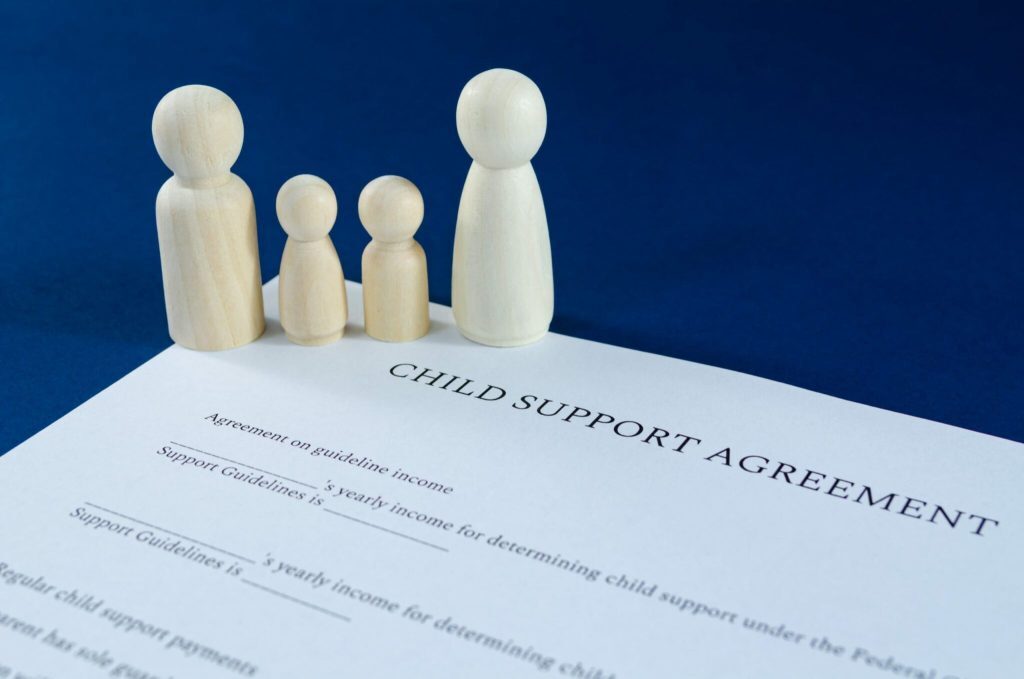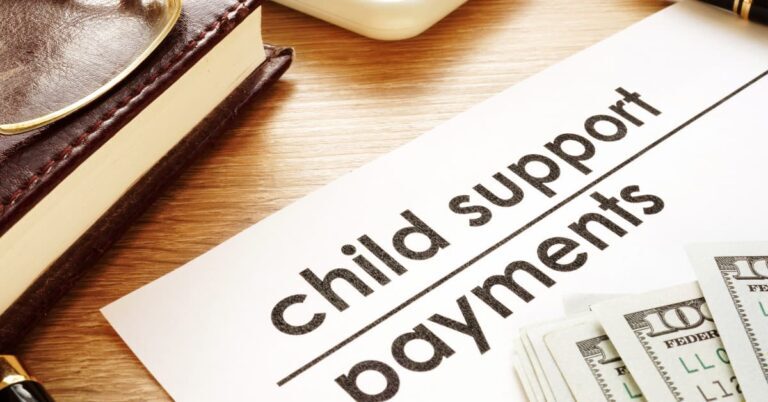The idea that women do not have to pay child support is a myth. While historically, a father would make child support payments for the children, this is no longer the standard.
Do women have to pay child support? Depending on the circumstances of the divorce or separation, women paying child support is a likely possibility.
Why would a woman have to pay child support? Child care is necessary, and financial support helps ensure the child receives appropriate care and a certain standard of living.
Ontario family laws do not take gender as a primary consideration for deciding which parent should pay child support.
Custodial Parent Statistics
Many parents or guardians choose to settle child support arrangements outside of court. As a result, many of these arrangements go unrecorded compared to those that apply for a child support court order.
How many women pay child support? The statistics do support the stereotype that women rarely need to be paying parents in a child support arrangement.
From 1994-1995, 79.3 percent of court-ordered custody arrangements granted mother-exclusive custody. These figures meant that mothers were more likely to receive, not pay, child support from fathers.
Still, this doesn’t mean that Canadian courts are unjustified in giving custody to certain mothers. The numbers alone do not provide context for each case. Courts often make decisions that help protect the child’s best interests.
Culturally, many households still expect mothers to perform most child-rearing responsibilities. Also, these statistics do not include child support arrangements settled outside of court.
HOW DOES CHILD SUPPORT WORK?
Toronto’s child support system requires specific processes to ensure the welfare of all parties involved. Following the processes below can make setting up, paying, and enforcing financial support payments run more smoothly.
Arranging child support
You could arrange, update, or enforce child support payments in three ways.
- Written agreement. Both parents or caregivers could agree to a child support arrangement through a written agreement. They could also seek legal advice from a mediator or child support lawyer in Ontario to iron through the details.
- Online. The parents or caregivers could enter information into the Child Support Service online form to arrange child support.
- Court order. If one parent or caregiver is resistant to arranging child support, one party may file documents and seek help from a family court. The court could produce a child support order to help enforce child support.
Calculating child support
Child support payment calculations consider three factors:
- The number of children
- The paying parent’s province or territory of residence
- The parent’s income
The parent that does not have the primary residence of the children must pay child support in an amount based on their income. Parents can also use this calculator to estimate the amount of child support necessary for their situation.
Paying and receiving child support
If you opt to arrange child custody online or in court, the arrangement will automatically fall under the Family Responsibility Office (FRO).
This office helps ensure the financial security of families relying on court-ordered financial support. They are responsible for collecting, distributing, and enforcing child support and spousal support payments. They also determine how the money will be paid and received, such as through bank transfers.
However, it’s important to note the FRO’s limitations. They will not and cannot make child support payments if the payor fails to fulfil their obligation, change the terms of court orders or agreements, or involve themselves in child custody or access issues.
If you opt to arrange child support through a written agreement, you can operate without the FRO’s help. However, you can still choose to involve the FRO when paying or receiving child or spousal support.
To file your agreement with the FRO, you must submit a copy of your written support agreement and an affidavit to a nearby courthouse. You can submit these documents via mail or in person.
Next, you must send a copy of your written agreement to the FRO. You can fax the document to the number 416-240-2401 or mail it to the following address:
Family Responsibility Office
Ministry of Community and Social Services
PO Box 200 STN A
Oshawa, Ontario L1H 0C5
If you are the payor and have an open case with the FRO, make your child support payments to the office. They usually transfer the amount to the recipient within one to two business days.
Do not pay directly to the recipient, or the payment will not reflect on your file. FRO adjustments will cost a $100 fine.
If you are the recipient, you can expect child support payments within 30 to 60 days after registration. This condition applies if the payor makes their payments on time or if there are no issues with the registration process.
WHY DO MEN HAVE TO PAY CHILD SUPPORT?
Who pays child support in Ontario? Historically speaking, women would typically receive custody and primary residence of the children, while fathers would be the breadwinners and be ordered to pay child support.
However, parental roles are no longer reliant on gender. Society has evolved so that it is common for fathers to spend more time at home with their children, and mothers often earn more than fathers.
So, can a woman pay child support? Yes, a father may have the primary residence of the children, while the non-custodial mother must pay child support.
Furthermore, it is often mistaken that the party with the higher income must pay child support. The law is structured so that the parent that does not have the primary residence of the child will have to pay child support in an amount following their income.
Thus, even if the custodial father earns a higher income than the mother, if he is the children’s primary caregiver, he will receive child support payments from the mother.
However, suppose both parents spend equal (or almost equal) parenting time with the children. In that case, the party with the higher income usually has to pay child support as opposed to the one with low income, subject to exceptions.
IF I PAY CHILD SUPPORT, DO I HAVE TO PAY FOR ANYTHING ELSE?
Yes. Along with child support, the court may also order payment of section 7 expenses, which cover “special and extraordinary” expenses. According to the Federal Child Support Guidelines, these expenses are paid in addition to child support.
To determine whether an expense falls under section 7, it must adhere to the following criteria:
- The necessity of the expense to the child’s best interests
- The reasonableness of the expense. This consideration includes the means of the spouses and the child and the family’s spending patterns before the separation
Expenses that fall under the category of special or extraordinary include:
- Childcare expenses incurred due to the parent with primary parenting time’s employment, disability, illness, education, or training for employment
- Dental and medical expenses for insurance premiums
- Health expenses exceeding $100 annually
- Extraordinary expenses for primary and secondary education
- Post-secondary education expenses
- Extraordinary expenses for extracurricular activities
Section 7 expenses are support obligations typically paid by both parties. These expenses apply whether or not they have primary decision-making responsibility (formerly primary custody).
These costs are apportioned to each party based on their respective incomes. Thus, a single mother, even if she is the sole caregiver, will always have to pay Section 7 expenses, should any such costs exist.
Decision-Making Responsibility and Parenting Time
Decision-making responsibility and parenting time are new terms introduced in the current version of the Divorce Act. While older versions used “custody” and “access,” these terms have been replaced with “decision-making responsibility” and “parenting time,” respectively.
Decision-making responsibility
This term refers to making significant decisions concerning the child’s well-being. These decisions often concern the child’s education, health, culture, religion, and extracurricular activities.
There are three primary setups for decision-making responsibility, which are the following:
- Sole decision-making responsibility is when one parent makes the decisions.
- Joint decision-making responsibility is when both parents consult one another and come to a conclusion together.
- Divided/parallel decision-making responsibility is when one parent decides on some issues while the other parent decides on others.
Parenting time
This term refers to the time children spend under the care of one parent, whether they are physically together or not. Parenting time also includes the time children spend in school.
Once parents divorce or separate, they may set a schedule. Parenting time can be classified as one of the three below:
- The majority of parenting time covers situations where the child spends more than 60 percent of their time with one parent.
- Shared parenting time is when a child spends at least 40 percent of their time with each parent.
- Split parenting time refers to situations involving more than one child. In this arrangement, each parent has the majority of parenting time with at least one child.
Factors To Consider When Deciding on Parenting Arrangements
Once you and your partner decide to separate or file for divorce, it’s essential to decide on parenting arrangements. Any children you and your partner may have will also suffer the repercussions of your separation or divorce.
Below are some significant factors you should consider when making parenting arrangements post-divorce or separation.
The child’s best interests
When making parenting arrangements, your primary priority should always be the best interests of your child or children. The agreement should help protect your children’s physical, psychological, and emotional safety and well-being.
The Divorce Act offers guidelines on protecting the child’s best interests when making parenting arrangements. They consider the following factors when making a parenting or contact order, but you can also use these when deciding on your own.
- The child’s needs, especially for stability, at their age and stage of development
- The child’s relationship with each spouse, sibling, caregiver, relative, or other relevant relations
- The willingness of each spouse to support the child’s relationship with the other spouse
- Each spouse’s history of care for the child
- The child’s preferences considering their age and maturity
- The child’s cultural, linguistic, spiritual, and religious upbringing and heritage, including indigenous upbringing and heritage
- Plans for the child’s care
- Each parent or guardian’s willingness and ability to care for and meet the child’s needs
- Each parent or guardian’s willingness and ability to cooperate, especially with one another, on matters that affect the child
Family violence
Another significant factor that one should consider when making parenting arrangements is family violence. Any history or tendency towards family violence could significantly impact the child’s safety and well-being.
The court would consider the nature and seriousness of violent acts and how frequently they occur. Aside from physical violence, they may also look into coercive or controlling behaviour and whether the child is a recipient or witness to these violent acts.
Exposure to family violence could have physical and psychological effects, making it a significant factor in parenting arrangements.
If the family has any history of violence, it’s best to take steps to address it. These steps could range from therapy to court orders limiting access to the child, depending on the situation.
Other factors
Each family and each child is different. It’s essential to adhere to the guidelines set by the Divorce Act, but there may also be factors unique to your family.
For example, your child may have special or unique talents and interests. These interests could include athletic, artistic, or academic endeavours. One parent may be more fit to oversee these interests than the other.
Speaking with a professional such as a psychologist or social worker is a good idea. They can help determine the best parenting arrangement to support your child’s needs and interests at their particular stage of development.
Seek Legal Assistance from a Child Support Lawyer in Toronto
Can women pay child support? Yes. When deciding who pays, gender and child support are not connected.
The law helps ensure that the children, and the parent primarily taking care of the children, are financially supported. This financial support is essential to safeguard the children’s best interests.
If you’re unsure of how to proceed or have some issues with your child support arrangements, seek legal assistance immediately. Contact Nussbaum Law for a consultation.
FAQs on Do Women Pay Child Support?
What are arrears in child support?
Arrears are amounts of unpaid child support accrued under an existing agreement.
How long should parents pay child support?
In most cases, parents must pay child support until the child reaches 18 years old in Ontario. Payments during this period usually cover necessities up until high school. However, there are some exceptions. These exceptions include cases when a child has a disability or is enrolled full-time in a post-secondary degree.
Does the paying parent need to pay both child support and spousal support?
Yes, if these payments are agreed upon by both parties or ordered by the court. However, child support takes precedence and is mandatory.
Contact Nussbaum Law to book a free consultation with one of our Toronto divorce lawyers.










